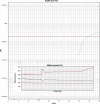Point: is the era of viral culture over in the clinical microbiology laboratory?
- PMID: 23052302
- PMCID: PMC3536207
- DOI: 10.1128/JCM.02593-12
Point: is the era of viral culture over in the clinical microbiology laboratory?
Abstract
Conventional tube culture systems have long been the mainstay in clinical virology for the growth and identification of viruses from clinical specimens. Innovations such as centrifugation-enhanced shell vial and multiwell plate cultures and the use of genetically engineered and mixed cell lines, coupled with faster detection of viral replication, have allowed for reasonable turnaround times for even some of the most slowly growing clinically important human viruses. However, molecular methods, in particular, the PCR, have usurped the role of viral culture in many laboratories, limiting the use of this traditional method of virus detection or replacing it altogether. Advances and improvements in molecular technology over time have also resulted in newer generations of more rapid and accurate molecular assays for the detection, quantification, and genetic characterization of viruses. For this point-counterpoint, we have asked two individuals, Richard L. Hodinka of the Children's Hospital of Philadelphia, a clinical virologist whose laboratory has completely eliminated viral culture in favor of molecular methods, and Laurent Kaiser, head of the Virology Laboratory at the University of Geneva Hospital, who continues to be a strong advocate of viral culture, to discuss the relevance of viral culture in the molecular age.
Figures


Comment in
-
Counterpoint: is the era of viral culture over in the clinical microbiology laboratory?J Clin Microbiol. 2013 Jan;51(1):4-8. J Clin Microbiol. 2013. PMID: 23393647 No abstract available.
References
-
- Stürmer M, Reinheimer C. 2012. Description of two commercially available assays for genotyping of HIV-1. Intervirology 55:134–137 - PubMed
-
- Sidoti F, Bergallo M, Costa C, Cavallo R. 9 April 2012. Alternative molecular tests for virological diagnosis. Mol. Biotechnol. (Epub ahead of print.) doi:10.1007/s12033-012-9533-8 - DOI - PMC - PubMed
MeSH terms
LinkOut - more resources
Full Text Sources
Other Literature Sources
Medical

